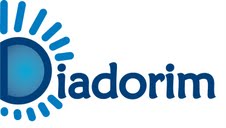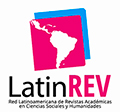The translator’s voice in the translations of the paratexts written by Charlotte Brontë for the second and third editions of Jane Eyre — dedication, preface and note
DOI:
https://doi.org/10.11606/issn.2317-9511.v47p143-166Keywords:
Translator’s voice; Translation paratexts; Literary translation; Jane Eyre; Charlotte BrontëAbstract
Dedications, prefaces, and author’s notes are integral parts of a novel, that is, they were included in the volume of the main text by the will of its author, as stated by Genette (2009) when defining what paratexts are. Charlotte Brontë added to her novel, Jane Eyre (1847), a dedication and a preface to the second edition, and a note to the third edition, all signed with the pseudonym, Currer Bell, whose association with the writer would only be revealed by her in 1850. There are at least 20 translations of Jane Eyre in Brazil, but only 11 of them have translated the paratexts. The main point of this article is to demonstrate that the translator's voice can be present (Hermans 1996; Schiavi 1996) in the translation of paratexts (Genette 2009), which can impact the way Brontë's message is transmitted to her readers in Brazil. A comparative descriptive analysis of the translated paratexts with those of the English version shows that the translator's voice is present mainly when a gender is assigned to the author of the source text. Considering that the real identity of the author of the novel was only revealed in 1850, we argue that the translators used their voice to make choices in place of the author — three translations attribute a female voice to the author of the paratexts, one attributes a neutral voice and the others, male voices.
Downloads
References
ATKINSON, J. Explanatory Notes and Selected Variants. In: C. BRONTË. Jane Eyre. Oxford: Oxford University Press, 2019.
BRONTË, C. Jane Eyre. London: Penguin Classics, 2016 [1847].
BRONTË, C. Jane Eyre. Oxford: Oxford University Press, 2019 [1847].
BRONTË, C. Jane Eyre. Trad. Desconhecido. Petrópolis: Vozes de Petrópolis, 1926.
BRONTË, C. Jane Eyre. Trad. M. Santarrita. Rio de Janeiro: Francisco Alves, 1983.
BRONTË, C. Jane Eyre. Trad. L. Esteves e A. Pisetta. Rio de Janeiro: Paz e Terra, 1996.
BRONTË, C. Jane Eyre. Trad. W. R. de Oliveira. Belo Horizonte: Editora Itatiaia, 2008.
BRONTË, C. Jane Eyre. Trad. H. Seixas. Rio de Janeiro: Bestbolso, 2011.
BRONTË, C. Jane Eyre. Trad. D. Goettems. São Paulo: Editora Landmark, 2012.
BRONTË, C. Jane Eyre. Trad. R. Bettoni. Porto Alegre: L&PM, 2017. E-book.
BRONTË, C. Jane Eyre. Trad. S. Viana. 3ª ed. Rio de Janeiro: Nova Fronteira, 2018.
BRONTË, C. Jane Eyre. Trad. A. Lisboa. Rio de Janeiro: Zahar, 2018. E-book.
BRONTË, C. Jane Eyre. Trad. C. Mioranza. São Paulo: Lafonte, 2019.
BRONTË, C. Jane Eyre. Trad. A. Duarte e C. Duarte. São Paulo: Martin Claret, 2020. E-book.
BRONTË, C. Jane Eyre. Trad. F. Abreu. São Paulo: Penguin-Companhia das Letras, 2021a.
BRONTË, C. Jane Eyre. Trad. P. Rasmussen. Jandira: Principis/ Ciranda Cultural, 2021b. E-book.
BRONTË, C. Jane Eyre. Trad. M. Coutinho. Dois Irmãos, RS: Clube de Literatura Clássica, 2022.
BRONTË, C. Jane Eyre: uma autobiografia. Trad. I. Prospero. Rio de Janeiro: Antofágica, 2023.
BRONTË, C. Biographical notice of Ellis and Acton Bell (Appendix). In: E. Brontë. Wuthering Heights. Oxford: Oxford University Press, 1997: 361–367.
BRONTË, C. To W. S. Williams, 28 October 1847. In: M. Smith (Ed.). Selected Letters. Oxford: Oxford University Press, 2010a: 88.
BRONTË, C. To W. S. Williams, 21 December 1847. In: M. Smith (Ed.). Selected Letters. Oxford: Oxford World’s Classics, 2010b: 94.
BRONTË, C. To? W. S. Williams, 31 December 1847. In: M. Smith (Ed.). Selected Letters. Oxford: Oxford World’s Classics, 2010c: 95.
BRONTË, C. To W. S. Williams, 28 January 1848. In: M. Smith (Ed.). Selected Letters. Oxford: Oxford World’s Classics, 2010d: 101.
CLÁSSICO. In: E-DICIONÁRIO de Termos Literários. Disponível em: https://edtl.fcsh.unl.pt/encyclopedia/classico. Acesso em: 3 maio 2023.
DAVIES, S. Notes. In: C. Brontë. Jane Eyre. London: Penguin Classics, 2006: 542.
EVEN-ZOHAR, I. Polysystem Studies. Poetics Today, n. 1/v. 11, 1990.
GASKELL, E. The Life of Charlotte Brontë. London: Penguin Classics, 1997 [1857].
GENETTE, G. Paratextos editoriais. Trad. A. Faleiros. Cotia: Ateliê Editorial, 2009.
HERMANS, T. The Translator’s Voice in Translated Narrative. Target, n. 1/v. 8, 1996, pp. 23─48. DOI 10.1075/target.8.1.03her
JANE EYRE. In: WIKIPEDIA. Disponível em: https://pt.wikipedia.org/wiki/Jane_Eyre. Acesso em: 21 abr. 2024.
JANE EYRE. In: WIKISOURCE. Disponível em: https://en.wikisource.org/w/index.php?title=File:Jane_Eyre_(Second_Edition)_Volume_3.djvu&page=7. Acesso em: 21 abr. 2024.
JUNG, D. ‘Currer Bell’: Jane Eyre’s Alternative Proper Name. Brontë Studies, n. 1/v. 46, 2021, pp. 43–55. DOI: 10.1080/14748932.2021.1835064
LAMBERT, J.; VAN GORP, H. On Describing Translations. In: T. HERMANS (Ed.). The Manipulation of Literature: Studies in Literary Translation. New York: Routledge, 1985: 42-53.
LEFEVERE, A. Translation, Rewriting, and the Manipulation of Literary Fame. London and New York: Routledge, 1992.
PETERS, M. An Unpublished Brontë Letter: The Second Edition of
“Jane Eyre”. Brontë Society Transactions, n. 2/v. 18, 1982, pp. 115─119, DOI: 10.1179/030977682796456704.
SCHIAVI, G. There Is Always a Teller in a Tale. Target, n. 1/v. 8, 1996, pp. 1─21. DOI 10.1075/target.8.1.02sch
Downloads
Published
Issue
Section
License
Copyright (c) 2024 Adriana Iwasa, Profa. Dra. Lenita Maria Rimoli Pisetta

This work is licensed under a Creative Commons Attribution-NonCommercial-ShareAlike 4.0 International License.
Autores que publicam nesta revista concordam com os seguintes termos:
- Autores mantém os direitos autorais e concedem à revista o direito de primeira publicação, com o trabalho simultaneamente licenciado sob a Licença Creative Commons Attribution BY-NC-SA que permite o compartilhamento do trabalho com reconhecimento da autoria e publicação inicial nesta revista.
- Autores têm autorização para assumir contratos adicionais separadamente, para distribuição não-exclusiva da versão do trabalho publicada nesta revista (ex.: publicar em repositório institucional ou como capítulo de livro), com reconhecimento de autoria e publicação inicial nesta revista.
- Autores têm permissão e são estimulados a publicar e distribuir seu trabalho online (ex.: em repositórios institucionais ou na sua página pessoal) a qualquer ponto antes ou durante o processo editorial, já que isso pode gerar alterações produtivas, bem como aumentar o impacto e a citação do trabalho publicado (Veja O Efeito do Acesso Livre).







